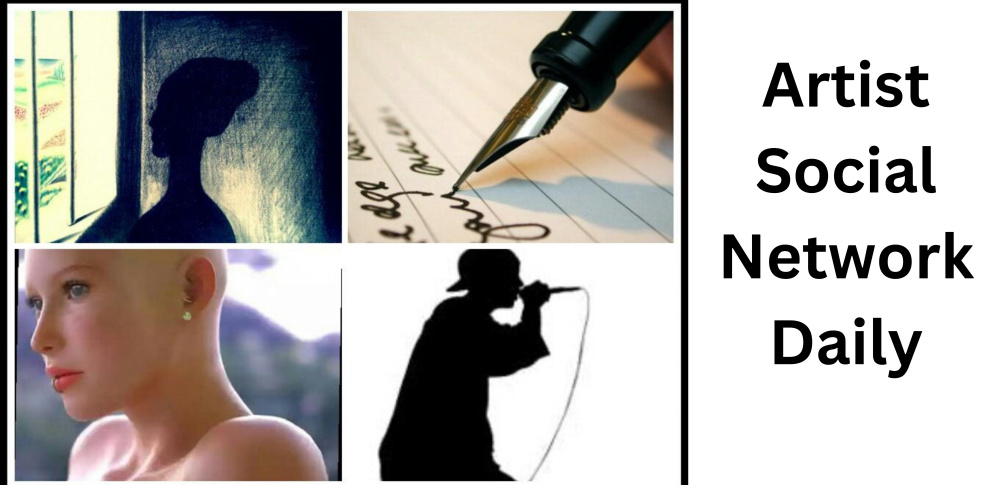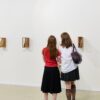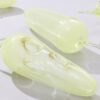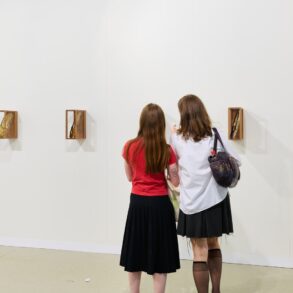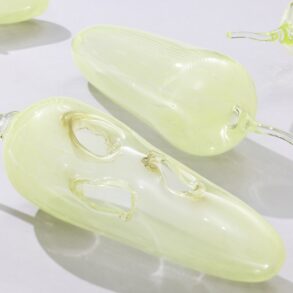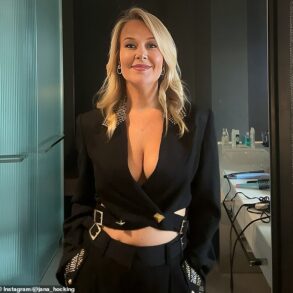Washington, D.C. is a city filled with museums, but works by male artists dominate the galleries. Except for one museum on New York Avenue, NW: The National Museum of Women in the Arts.
“Our mission overall is to champion women in the arts,” said Senior Curator Ginny Treanor. “From the historical perspective, that means exhibiting and showcasing art by women of the past — of which there were many — and making sure that they are not forgotten again, or written out of the histories again, to preserve their legacy.”
The mission extends to championing contemporary artists, Treanor added, seeking to “really lean into advocating for women’s equity in the art world, as well as supporting up and coming artists and giving them the resources and the platform they need.”
Women have historically been underrepresented in art museums, Wilhelmina Cole Holladay learned after a trip to Europe in the 1970s with her husband, Wallace. The pair traveled to Europe and were taken with the work of Clara Peeters, a 17th century Flemish artist who specialized in still-life paintings.
The Holladays, upon returning home, realized they couldn’t find any information on Peeters — or any other historical women in art.
“They made it their mission to collect art by women, and the core of their collection came to the museum in 1987,” Treanor said. “And we opened our doors and we’ve been here ever since.”
The museum began with a goal of reinserting women into art history, “which is great and necessary and needed,” Treanor added. “But over the years, as our mission has kind of morphed and evolved, it’s really become about advocacy.”
The advocacy includes shedding light on the disparities women still face in the art world. A survey published in 2019 of 18 prominent U.S art museums found that male artists made up 87% of representation at those museums, and that 85% of represented artists were white. Another study found that just 11% of acquisitions between 2008 and 2019 involved the work of female artists. The museum began a social media campaign in 2016 asking each March during Women’s History Month if people can name #5WomenArtists to call attention to the fact that women have not been treated equally in the art world.
“There’s still a lot of gender disparity,” said Treanor, adding that the museum is also prioritizing works of transgender and nonbinary artists to their displays.
“Part of me wishes that we weren’t needed anymore, but again, when you look at the numbers, it tells a different story,” Treanor said. “There is still a really big disparity, and we will be here as long as it takes.”
A temple to the arts
Inside the galleries, you’ll find works from artists like Amy Sherald, known for her famous portrait of Michelle Obama, or Lee Krasner, who is often referred to as “Jackson Pollack’s wife.” There is a Frieda Kahalo on display, as well as a Berthe Morisot. The museum has over 6,000 objects in its collection.
The building the museum calls home was once the Washington, D.C. headquarters for the Freemasons, a fraternal order. Treanor calls it “a nice irony” — when the building was originally built, women were not allowed on the premises.
“But now we’ve turned it into kind of this — I hesitate to use the word temple, but it was a temple at one point — but we’ve turned it into a temple of the arts now.”
The museum reopened last fall following a two year, $70 million renovation, which expanded and renovated the gallery space, created a new learning commons with a state-of-the-art library and research center, and improved infrastructure of the building.
“The renovation was a long time coming,” said Treanor. “That moment of reopening has really become a way for us to reintroduce ourselves to the public, and to kind of put ourselves back on the radar of Washingtonians in particular, our local audience, but also on a global scale as well.”
During the pandemic, the museum started hosting “Chats at Five,” a virtual program each Friday evening, to connect with art enthusiasts who were stuck at home in isolation. The museum welcomes school groups, and admittance is free on the first Sunday of the month.The museum also launched NMWA nights, a pilot program to stay open late for the third Wednesday of the month.
“I would hope that when people leave this museum for the first time, and hopefully they come back to that they come away with the idea that there have always been women artists, there will always be women artists. And this is a place where you can come and see some of the best examples of things that women have made over the past five centuries,” Treanor said.
As for how museum goers across the country or world can celebrate female artists?
“If you see work by women on the wall, call it out!” said Treanor. “Celebrate it, put it on Instagram, tag the museum, tag us. We’re really not interested in shaming anybody for not having enough women on their walls, but rather celebrating the women artists that they are showing.”
For more information about the museum, its collections, and its education programs, click here.
This post was originally published on this site be sure to check out more of their content
